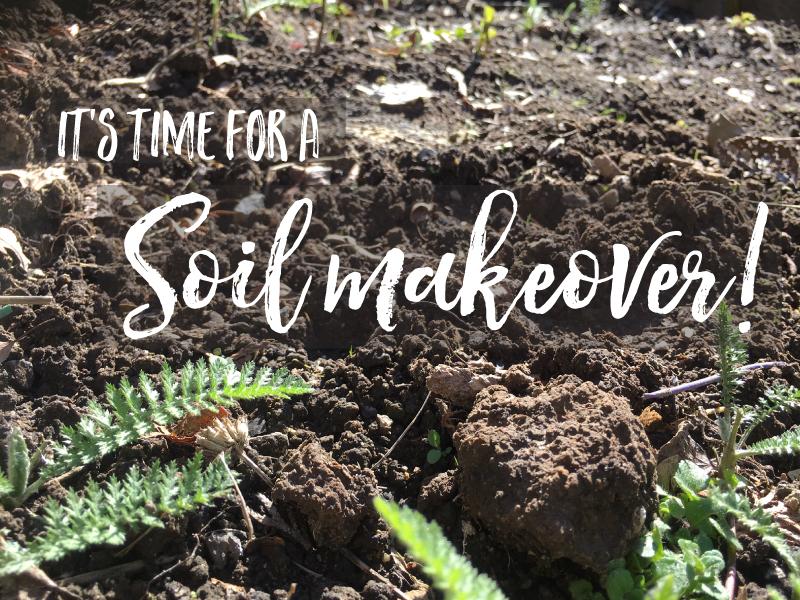Give your soil some TLC
It’s spring! We all get so excited when the sun comes out and buds seem to appear overnight on our favourite plants. Sometimes it actually feels like you could sit and watch the grass grow! All this energy that the plants put into growing has to come from somewhere.
It comes from the soil. A plant could be in the best position in perfect light, with ready access to water. But all the TLC in the world won’t help if you don’t look after its lifeline. So now is the time to give it a transfusion.
Improving your soil
Spring is a great time to focus on improving the soil conditions in the garden. Plants will put on the majority of their growth in spring, so feeding in September will help get the most out of this active season.
We could talk about soil all day (yes, really!) but we won’t bore you with all the dirty details (unless you ask us)! What we can do though is give you some basic tips that you can use to get your garden soil ready for an amazing spring.
Understand what type of soil you have
Knowing your soil type will help you figure out how to improve it. If your soil is sandy, you will have great drainage but the soil is likely to be very low in nutrients. At the other end of the spectrum is clay. If you have clay soil, you are lucky in one way as clay is very high in nutrient. But it drains very slowly and can be hard for plants to access the nutrients (you may have sodic soil).
One way to quickly check the soil type is to grab a handful of wet soil and squeeze it together. Can you mould it into a ball and it stays in shape? Then you are looking at clay. Does it run through your fingers as you try and squeeze it, not sticking together at all? Then you have sand. If you have something that partially sticks together then you likely have a loam soil.
Sandy soils
Sand dries out very quickly, and you may need to re-wet the soil with a wetting agent. Check what happens when you add water. Push the top layer away and check if it is still dry underneath. If it is, it’s likely your soil in hydrophobic. A product like Saturaid or Rapid Soak will help the soil particles absorb water. Add a decent layer of mulch to retain the moisture in the soil and this also helps moderate soil temperatures.
The other challenge with sand is that it’s very low nutrient content. Adding composts and manures puts additional organic matter into the soil and enlivens a sandy soil. You need to add for good amount for the best effect, ideally dig it through the top 30cm of soil. If it’s not possible to dig it right through without upsetting your plant roots, it will still be beneficial to apply it to the top layer of your soil.
Additional fertilisers are needed to supplement any nutrients the plant has used up in the previous season. Fertilisers like a pelletised poultry manure, cow manure, blood and bone, or slow release fertilisers will also help boost the nutrient level. Regular applications of liquid fertilisers like Powerfeed and Seasol can also be helpful.
Clay soil
Full of nutrient, clay is great, but like sand it comes with difficulties. Clay can become sodic, and may have a pH that is more alkaline, making it hard for plants to access the nutrients.
Clay soil can be improved with the application of gypsum, which helps to break down the amount of sodium chloride in sodic soils. Don’t worry about gypsum effecting your soil pH, it is pH neutral.
Because clay soil particles are so fine, they can cause problems with drainage and become waterlogged. Clay can be improved by adding organic matter such as compost or manure, which can encourage worms into the area. The worms help to aerate the soil. This should be done every year in spring, and over time your clay soil will break down and become easier to work with.
Loam soil
Lucky you! You are the envy of all gardeners – this is the ideal soil mix. Loam is generally rich in organic matter, but can still be improved with the addition of compost and manures, and will still benefit from the application of mulch.
Plant to your soil conditions
At the end of the day, you need to work with the soil you have. It’s no good trying to grow plants with a high nutrient requirement in sandy, dry soil; or Australian natives in waterlogged clay (although there are always some exceptions to these rules).
Work with nature, not against it and choose plants that will thrive in your soil. This way you will be setting yourself up for garden success, rather than disappointment.













